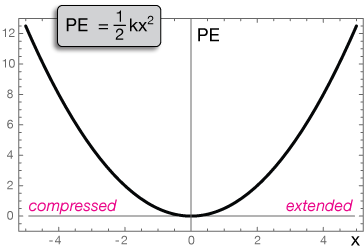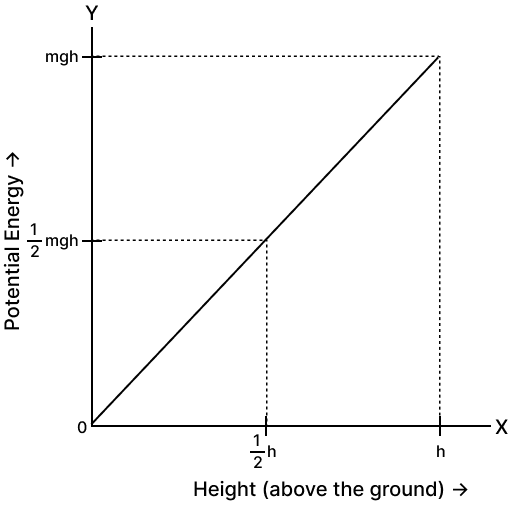Gravitational and Elastic Potential Energy
Potential energy is stored energy due to position or configuration. The two main forms discussed in mechanics are gravitational potential energy and elastic (spring) potential energy.
Gravitational Potential Energy
This is the energy stored in an object due to its height in a gravitational field:
\[
U_g = mgh
\]
- m: mass (kg)
- g: acceleration due to gravity (9.8 m/s²)
- h: height above a reference point (m)
Gravitational potential depends on the point of reference. There is possible to have a negative potential if the point of reference is above the point you are calculating. For example, if you take the gravitational potential energy on a table to be 0, the potential energy on the ground will be negative.
Elastic (Spring) Potential Energy
This is the energy stored in a spring when it is compressed or stretched:
\[
U_s = \frac{1}{2} k x^2
\]
- k: spring constant (N/m)
- x: displacement from equilibrium (m)
Conceptual Notes
- Gravitational potential increases with height.
- Elastic potential energy is always positive, increasing with compression/stretch.
- Both forms can convert to kinetic energy and back in systems like pendulums or spring-mass oscillators.
Example Problem
A 2 kg object is lifted to a height of 5 meters. What is its gravitational potential energy?
\[
U_g = mgh = 2 \times 9.8 \times 5 = 98 \, \text{J}
\]
Graphical Representation

